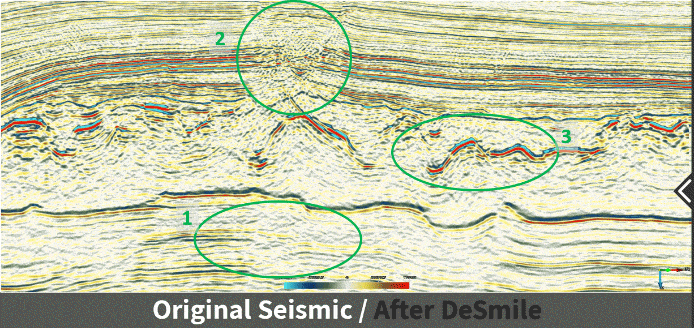Today, we show another great example of how you can quickly improve the interpretability of seismic data by applying a trained Machine Learning model.
DeSmile is one the models from Lundin-GeoLab (nowadays AkerBP) that is available in OpendTect’s growing library of trained ML models

This model learned to suppress migration smiles on synthetic data. Being a large, trained 3D-Unet means the application is blazingly fast. Processing hundreds of square kilometers takes not more than a few minutes.
The example shown here is from offshore The Netherlands. The data is a PSDM volume that was processed in 2020. At first glance the seismic quality seems reasonable but closer inspection reveals a great amount of steeply dipping coherent noise events are cross-cutting primary reflections.
Application of DeSmile significantly improved the interpretability of the seismic data of the pre-salt target interval (1).
Also faults and low energy primaries in the post-salt interval are much better defined (2).
However, DeSmile also removed steeply dipping primaries at Top Salt level (3).